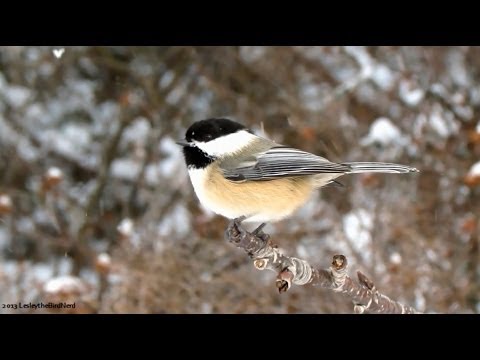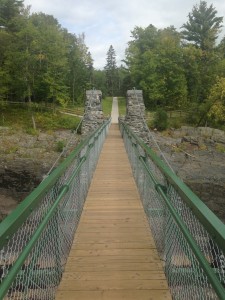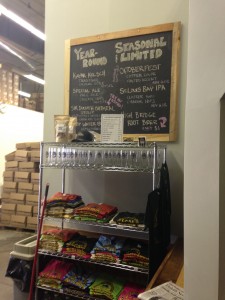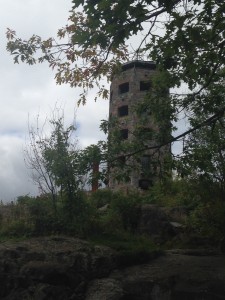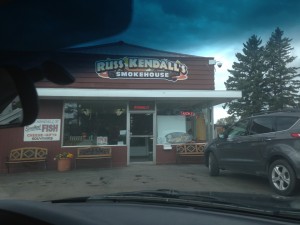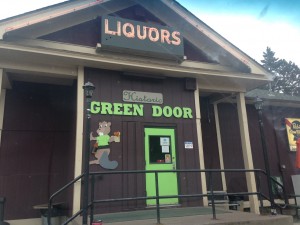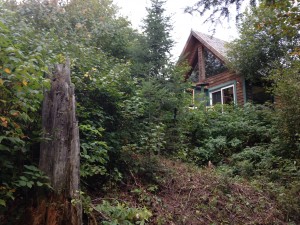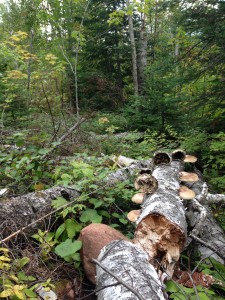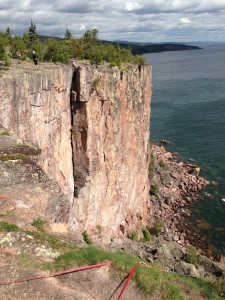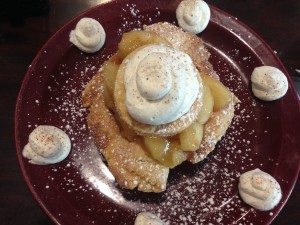I think it was about a year-and-a-half ago that I decided to learn Celsius. The best way to do it is just turn your phone to Celsius and set your favorite weather site to Celsius. (I personally recommend using Weather Underground.) And just don’t use Fahrenheit at all. Don’t translate the Celsius numbers, because you just won’t learn it. Just dive right in to Celsius. One morning you’ll wake up and see that it’s 8 degrees outside, and your first reaction is, “Gosh, that’s cold!” But then you go outside and discover that it’s actually fine. A light jacket or a hoodie will do.
So, I turned to Celsius in the fall and got accustomed to what single digits in Celsius felt like, and they’re actually remarkably wonderful. Winter arrives, and even the negative numbers feel quite all right. I met my limit around -18 degrees Celsius, a temperature that I felt was a tad too much on the cold. Just out of curiosity, I cheated a bit and translated that number to Fahrenheit to discover that that number is more or less slightly under 0 degrees Fahrenheit.
As winter crystalized on, and as winter dripped away to spring, and spring blossomed to summer, I decided to play a game with myself. I continued learning Celsius without any reference to Fahrenheit. I long have told others that 70 degrees Fahrenheit is when things get a bit too warm for me, but I wasn’t sure if that was in my head. Nonetheless, I kept watching the Celsius numbers grow ever higher as spring continued its relentless march towards my least favorite season. I discovered my limit came at about 20 degrees Celsius, which happens to be 68 degrees Fahrenheit.
So there you have it. It’s not in my head. And to celebrate the summer solstice that just came and went and therefore the ever diminishing hours of daylight until the winter solstice, I’ve decided to write a top ten list of reasons why I dislike summertime in Minnesota. And do keep in mind that I’m only being slightly serious:
- Traffic on the Greenway: There’s something interminably irritating about all the traffic that builds up on the best way to get from one end of town to the other, biking on the Midtown Greenway. Now, I feel a little caught in a paradox complaining about this, because I wish more people would ride bikes and get out of their cars, but in the same token, it’s really frustrating when I have to wait to pass slower bikers because of oncoming traffic.
- Loud Motorcycles: They always come out in the summer. It never fails. Motorcyclists seem much too feeble to ride their loud contraptions in the winter (while I continue to ride my bike when it’s not too frigid), but once summer arrives, they have to start roaring around on their monstrosities. I can’t help but think that they think other people are reacting with, “Oh wow! I wanna ride around on a loud bike just like that!” but no one is thinking that, only that you’re being a disruptive asshole.
- Heat and Humidity: It always frustrated me when people would say, “Oh, I’d much rather it’d be really, really hot than really, really cold,” and I react with, “But, you can be absolutely naked, and it’s 25 degrees Celsius, and you’re still sweating and uncomfortable, whereas in the winter, you can just add layers and layers and you can always warm up.” Plus, nothing beats a nice cup of tea when you’re wrapped in a blanket, reading a book, wearing your favorite Christmas jumper, and it’s a cold dark night on the longest night with the fluffiest snow flakes accumulating on the ground as they form a heavy layer of white that shines crystals in the city light. Sadly, things are only going to get warmer as Minnesota’s climate becomes more like what Missouri’s is today.
- Mosquitos (and Insects in General): Granted, these annoyances start to appear in the spring and they hang about into a part of the autumn, but at least with the arrival of autumn you can rest assured that they’ll go away soon. No one likes these ridiculous creatures excepts birds and bats and so on, and no one likes smelling like insect spray, and they ruin perfectly wonderful evenings drinking wine on a restaurant patio when you have to go inside because they’re bothering you, and there’s a tendency to accidentally swallow them as you make your way around by bike. Plus it’s not just mosquitoes. You have to deal with some other really horrible creatures like dragonflies, wasps, locusts, craneflies, and grasshoppers.
- Hot Garbage: Garbage in general is really gross, but it’s only made worse when it’s been sitting outside in a plastic oven for a few days, baking a mixture of pizza grease, snotty tissues, and moldy food that emanates the most putrid smell ever, made only all the worse by the flies that congregate in this smorgasbord for their masses.
- Block Parties: Minneapolis has no end of block parties where, for example, entire stretches of Lyndale shut down to make way for whatever street festival, or, if you’re lucky enough, they might close down your block to make way for National Night Out where you have to quickly dodge your neighbors and turn out your lights to pretend you’re not home so you’re not forced to talk about boring things that don’t matter like hair cuts and shoes. Sure, the sense of community this builds is nice for those of us who are extroverted, but for us introverts, it’s an exhausting spot of bother, especially when all you’re trying to do is get home and Hennepin Avenue is all overpopulated with people and cars because Rock the Garden just finished.
- Tourists from the Suburbs: While the Twin Cities have lots of cool things for visitors to offer from theatre to music to art to sports to shopping to dining, the area never really makes lists for top vacation destinations. Our tourists tend to come from the suburbs where entire restaurants get filled with boring white Republicans talking about their real estate taxes or their dishwashers, and they all live in such uninterestingly named places like Hopkins or Shoreview or, my personal favorite for most boring suburb name, Blaine.
- Getting Into Hot Cars: Is there nothing more oppressive than this? Granted, my personal mode of transport is by car or bus or train, and the latter two are always wonderfully air conditioned as soon as I get on, but on those occasions where I do hitch a ride with someone whose car has been parked for awhile, climbing into that hot, metal contraption is never fun, especially when the AC doesn’t work.
- Everyone Loves It: I always have a hard time reacting to people who exclaim, “Isn’t it just gorgeous outside!” and I’m sitting there going, “Um, no not really.” With my friends I’m able to tell them this with the added qualifiers of, “I’d prefer raining and 12 degrees to 32 and sunny any day,” but when some stranger’s making smalltalk, I don’t want to get into all that, so I just pretend and say, “Oh, yes. It is quite nice outside.” I wish that meteorologists would also remember that when it’s “gorgeous” outside that there’s a small portion of us who don’t think so. Wouldn’t it be wonderful if the next time we’re expecting grey skies and 8 degrees, the weather people would exclaim, “It’s going to be absolutely gorgeous the next few days!”
- You Can’t See Orion: My favorite constellation happens to be Orion, and you can’t see it in the summer. Whenever I look up at the summer sky, I always find myself missing the Greek hunter with his belt and arm outstretched as he aims with his bow, and that makes me sad. So bright and so visible in the winter months, and his stars are so vibrant and so blue! The constellation always had a bizarre calming effect on me, for whatever reason, and Orion always brings back wonderful memories of my oldest brother pointing out all the constellations when I was little, and I was looking up at the sky in total amazement, exclaiming to myself, “There is so much to this universe that I will never see!”
Just to be fair, however, here are three things I actually do like about summer:
- Flowers: I’ve always loved flowers, and I’ve always loved planting flowers and tending to them and watching them grow. Sadly, outside of the warmer months, we don’t get to adore lady slippers in the wild or admire begonias encircling people’s doorsteps or enjoy the fragrance of lilacs on the streets. Oh, and it’s pronounced LY-lacks not LY-locks. I can’t remember the first time I heard someone pronounce it LY-locks, but when I did, I was totally confused. (And I don’t care that Webster’s accepts both pronunciations. One’s right and one’s wrong, and no, don’t argue with me.)
- Camping and Campfires: For years and years and years, I thought I didn’t like camping. But three or four summers ago, I went with my dear friends Audry and Jeremiah to Wild River State Park to one of those fantastic hike-in sites where there’s no one around. It was so wonderful being outside for three days, reading, listening to birds, admiring the trees, cooking over a campfire. It’s then that I learned that camping isn’t just driving to a KOA site where there are families 20 feet from you, but it can also be finding somewhat secluded spaces where you’re the only people around for a good couple hundred yards or so. This is camping, I now know!
- CONvergence: There’s a wonderful, geeky convention that happens every summer called CONvergence. I went for the very first time last year, and it was absolutely wonderful! I dressed up as William Hartnell, attended some fun little panels, and listened to Marina Sirtis speak. This year I’m going as Tom Baker, and I can’t wait for next weekend to have a jolly old time once again! Maybe I’ll see you there! I’d say look for the one wearing the long scarf, but there might be several of us about…

